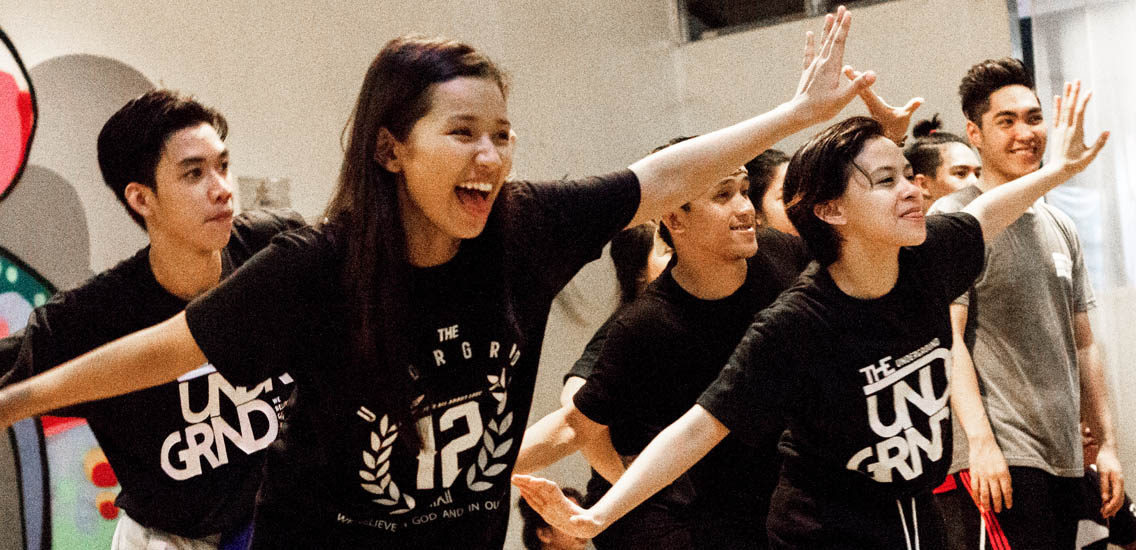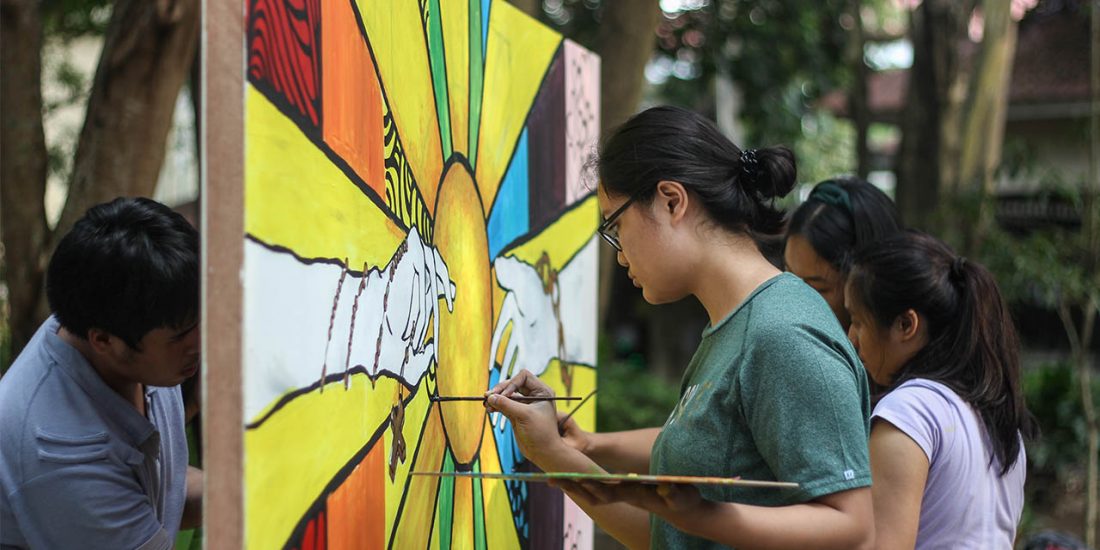The Undrgrnd on art, dance, and family


It’s enough to pique curiosity when you mention their name among college students. When you hear someone say “UG ’yan”, it’s bound to turn heads. They’ve definitely made a name for themselves, but that’s not the end of it. Behind every fire performance is a story of both passion and perseverance powerfully combined to honor art and convey their message. But there’s more to it than what appears on the surface—they are The Undrgrnd after all.
The grind
In a time when most the prominent dance troupes are Manila-based, founder Irish Paul Mendoza absorbed the then-obscure urban dance style and brought it to the South. Formed in 2012 with less than 10 members, The Undrgrnd was initially meant to be exclusive for Lasallian students. Later on, the group decided to welcome dancers beyond La Salle—or college, for that matter. Five years later, The Undrgrnd has opened the group for other creative fields such as music editing, production, costume designing, and more.
Now it sounds like it’s all smooth sailing, but it goes without saying that an independent organization composed mostly of students will have a tough road ahead of them. The first problem on the list would be what probably every dance group experiences at some point: the lack of recognition and respect for their craft.
Choreographer Mavy Marquez expresses her discontent at the treatment of dancers (and rightly so), boldly comparing the differences in appreciation between them and student athletes, saying, “We have nothing against athletes, but we’re just trying to prove na we deserve din kung ano ‘yong natatanggap ng mga athletes.” Certainly, dancing is just as physically taxing as your typical ball game.
Irish adds in his own gripes with event organizers demanding unreasonable last-minute revisions in their routine—not to mention the absurdly inadequate talent fee for all the time and creativity invested, a concern affecting artists of all mediums. The group has resolved to generate funds through selling merchandise, conducting dance classes, and sometimes, pitching in from their own pockets.
But among all these, the biggest struggle would have to be finding time for practice despite their differing schedules. It’s a tough obstacle for a group that’s trying to gather people of different walks of life to do their theses in one room. But when asked about how they manage, the first response was “`Di ko rin alam eh,” and that’s probably something that all students committed to extracurricular activities can relate to. On a more serious note, Irish says that it’s all about believing in yourself and making sacrifices. “Kailangan mong mag-eliminate, technically. Eliminate ‘yong gala, vices…pagiging magastos” and so forth.
It all pays off at the end of the day—they can assure that even after everything, they’re still standing and proving it’s worth all the hassle to hustle. You could say that they’re achieving their dreams, one step at a time. (Get it?)
The grit
A dance group is always a pool of vastly different people, each driven by their own purpose but brought together by what they all love—dancing. This was the case for choreographers Irish Paul Mendoza, Dune Stephen Mondejar, Cy Bayani, Mavy Marquez, and Vienne Belen who all use their craft as a means of expressing their individual beliefs.
Irish sees dancing as a way to boost people’s self-confidence, and stands firmly on exercising the mantra of believing in oneself. Dune believes that dancing isn’t just a hobby, but a form of celebration and a way to “build positive connections sa lahat ng tao.” Cy raises the rainbow flag with outstanding pride, hoping to inspire other members of the LGBTQ community to showcase their hidden talents. “Mayro’n din kaming kakayahan. May talents din kami,” Cy shared. Mavy, on the other hand, dances for women empowerment, encouraging other female dancers to dance freely despite the seemingly “boyish” hiphop dance moves. “I dance for those girls na gusto nilang sumayaw ng ganito. They want to dance freely na hindi jina-judge ng mga tao,” Mavy added. Similarly, Vienne wishes to break the social norms and gender stereotypes about dance steps. He also incorporates fashion into dancing, with the goal of being unique and “very androgynous [at] sobrang iba sa paningin.”
All in all, whether it be promoting confidence, peace, and love; or tackling serious social issues, dancing is the perfect avenue to propel their advocacies and make it known to everyone. Protesting in complete style, who’d have thunk?
The glory
It’s already common knowledge from those who know what The Undrgrnd is—and what it does—that they’re good at what they do. But what most don’t know is the amount of effort they put in and how much they value their camaraderie, mixing that with their motto, “We believe in God and in ourselves” to get where they are now.
From performing in company anniversaries to TV commercials, their passion and hard work bring opportunities in return. Adding in the frequent and successful dance classes, you could say that The Undrgrnd has established quite a reputation as a dance group in the South. But despite already having enough talent to go around, they claim that these successes can be credited just as much to their tight-knit bond, ultimately setting The Undrgrnd apart from other similar organizations. Mavy describes their bond as “60 percent family, 40 percent as a group,” which explains why most of their members are frontrunners for the loyalty award.
For their recruitment, Irish remarks that the team values character more than ability. “Kung magaling ka na sa craft mo, ‘yan ‘yong parang ticket mo para makapunta sa tuktok. And the one thing na makakapag-stay sa’yo naman sa tuktk is ‘yong character mo—‘yong attitude mo.” And as they branch out to other art forms, one can say that The Undrgrnd is an ideal environment for the passionate, dedicated, and creative millennial.
Speaking of millennials, one of the primary objectives of The UG as an organization (besides enriching their own craft) is to inspire not just each other, or the youth, but people in general. It has been their goal to remind the public that—despite their ridiculously appealing aesthetic—art isn’t just about appearances. Art doesn’t always have to be easy on the eyes, but rather what you really wish to express without worrying about pleasing everyone. Like what Dune said, art is “not what looks good, but what feels good.”
***
You know what they say about life being a huge struggle; it’s hard, everything’s a hassle, and sometimes you just want to curl in bed thinking, “uz2 q nah mmtaii”. But these guys faced the storms of having a double life with double the effort, grit, and never-say-die attitude to move past repeated failures and deliver a single important message: believe.
Not just your typical dancers, now are they?





